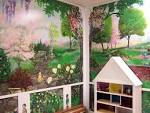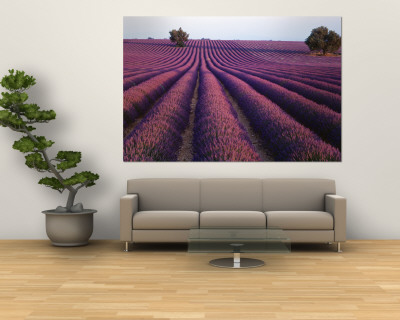Source(google.com.pk)
Wallpaper Mural Biography
Zoo animals usually live in enclosures that attempt to replicate their natural habitats, for the benefit of the animals and the visitors. They may have special buildings for nocturnal animals, with dim white or red lighting used during the day, so the animals will be active when visitors are there, and brighter lights at night to help them sleep. Special climate conditions are created for animals living in radical environments, such as penguins. Special enclosures for birds, insects, reptiles, fish, and other aquatic life forms have also been developed. Some zoos have walk-through exhibits where visitors enter enclosures of non-aggressive species, such as lemurs, marmosets, birds, lizards, and turtles. Visitors are asked to keep to paths and avoid showing or eating foods that the animals might snatch.
[edit]Open-range zoos
Main article: Safari park
Giraffes in the West Midlands Safari Park
Some zoos keep fewer animals in larger, outdoor enclosures, confining them with moats and fences, rather than in cages. Safari parks, also known as zoo parks and lion farms, allow visitors to drive through them and come in close contact with the animals.[2] The first of this kind of zoo was Whipsnade Park in Bedfordshire, England, opened by the Zoological Society of London in 1931, and covering 600 acres (2.4 km²). Since the early 1970s, a 1,800 acre (7 km²) park in the San Pasqual Valley near San Diego has featured the San Diego Zoo Safari Park, run by the Zoological Society of San Diego. One of two state-supported zoo parks in North Carolina is the 2,000-acre (8.1 km2) North Carolina Zoo in Asheboro.[20] The 500-acre (2.0 km2) Werribee Open Range Zoo in Melbourne, Australia, displays animals living in a savannah.
[edit]Public aquaria
The first public aquarium was opened in London Zoo in 1853. This was followed by the opening of public aquaria in continental Europe (for example, Paris 1859, Hamburg 1864, Berlin 1869, Brighton 1872) and the United States (Boston 1859, Washington 1873, San Francisco Woodward's Garden 1873, New York Battery Park 1896). In 2005 the non-profit Georgia Aquarium with more than 8 million US gallons (30,000 m³; 30,000,000 litres) of marine and fresh water, and more than 100,000 animals of 500 different species opened in Atlanta, Georgia. The aquarium's specimens include whale sharks and beluga whales.
[edit]Roadside zoos
Roadside zoos are found throughout North America, particularly in remote locations. They are small, unregulated, for-profit zoos, often intended to attract visitors to some other facility, such as a gas station. The animals may be trained to perform tricks, and visitors are able to get closer to them than in larger zoos.[21] Since they are unregulated, roadside zoos are notorious for instances of neglect[22] and cruelty.[23]
[edit]Petting zoos
Main article: Petting zoo
A petting zoo, also called children's farms or children's zoos, features a combination of domestic animals and wild species that are docile enough to touch and feed. To ensure the animals' health, the food is supplied by the zoo, either from vending machines or a kiosk nearby.
[edit]Animal theme parks
Main article: Animal theme park
An animal theme park is a combination of an amusement park and a zoo, mainly for entertaining and commercial purposes. Marine mammal parks such as Sea World and Marineland are more elaborate dolphinariums keeping whales, and containing additional entertainment attractions. Another kind of animal theme park contains more entertainment and amusement elements than the classical zoo, such as a stage shows, roller coasters, and mythical creatures. Some examples are Busch Gardens Tampa Bay in Tampa, Florida, Disney's Animal Kingdom in Orlando, Florida, Flamingo Land in North Yorkshire, England and Six Flags Discovery Kingdom in Vallejo, California .
[edit]Sources and care of animals
Lioness behind a wire mesh at the Werribee Open Range Zoo
Further information: Captivity (animal) and Environmental enrichment
In a modern zoo, about five animals are bred in captivity for every 20 animals on display. When they arrive at the zoo, the animals are placed in quarantine, and slowly acclimatized to enclosures which seek to mimic their natural environment. For example, some species of penguins may require refrigerated enclosures. Guidelines on necessary care for such animals is published in the International Zoo Yearbook.[24]
[edit]Conservation and research










Wallpaper Mural Biography
Zoo animals usually live in enclosures that attempt to replicate their natural habitats, for the benefit of the animals and the visitors. They may have special buildings for nocturnal animals, with dim white or red lighting used during the day, so the animals will be active when visitors are there, and brighter lights at night to help them sleep. Special climate conditions are created for animals living in radical environments, such as penguins. Special enclosures for birds, insects, reptiles, fish, and other aquatic life forms have also been developed. Some zoos have walk-through exhibits where visitors enter enclosures of non-aggressive species, such as lemurs, marmosets, birds, lizards, and turtles. Visitors are asked to keep to paths and avoid showing or eating foods that the animals might snatch.
[edit]Open-range zoos
Main article: Safari park
Giraffes in the West Midlands Safari Park
Some zoos keep fewer animals in larger, outdoor enclosures, confining them with moats and fences, rather than in cages. Safari parks, also known as zoo parks and lion farms, allow visitors to drive through them and come in close contact with the animals.[2] The first of this kind of zoo was Whipsnade Park in Bedfordshire, England, opened by the Zoological Society of London in 1931, and covering 600 acres (2.4 km²). Since the early 1970s, a 1,800 acre (7 km²) park in the San Pasqual Valley near San Diego has featured the San Diego Zoo Safari Park, run by the Zoological Society of San Diego. One of two state-supported zoo parks in North Carolina is the 2,000-acre (8.1 km2) North Carolina Zoo in Asheboro.[20] The 500-acre (2.0 km2) Werribee Open Range Zoo in Melbourne, Australia, displays animals living in a savannah.
[edit]Public aquaria
The first public aquarium was opened in London Zoo in 1853. This was followed by the opening of public aquaria in continental Europe (for example, Paris 1859, Hamburg 1864, Berlin 1869, Brighton 1872) and the United States (Boston 1859, Washington 1873, San Francisco Woodward's Garden 1873, New York Battery Park 1896). In 2005 the non-profit Georgia Aquarium with more than 8 million US gallons (30,000 m³; 30,000,000 litres) of marine and fresh water, and more than 100,000 animals of 500 different species opened in Atlanta, Georgia. The aquarium's specimens include whale sharks and beluga whales.
[edit]Roadside zoos
Roadside zoos are found throughout North America, particularly in remote locations. They are small, unregulated, for-profit zoos, often intended to attract visitors to some other facility, such as a gas station. The animals may be trained to perform tricks, and visitors are able to get closer to them than in larger zoos.[21] Since they are unregulated, roadside zoos are notorious for instances of neglect[22] and cruelty.[23]
[edit]Petting zoos
Main article: Petting zoo
A petting zoo, also called children's farms or children's zoos, features a combination of domestic animals and wild species that are docile enough to touch and feed. To ensure the animals' health, the food is supplied by the zoo, either from vending machines or a kiosk nearby.
[edit]Animal theme parks
Main article: Animal theme park
An animal theme park is a combination of an amusement park and a zoo, mainly for entertaining and commercial purposes. Marine mammal parks such as Sea World and Marineland are more elaborate dolphinariums keeping whales, and containing additional entertainment attractions. Another kind of animal theme park contains more entertainment and amusement elements than the classical zoo, such as a stage shows, roller coasters, and mythical creatures. Some examples are Busch Gardens Tampa Bay in Tampa, Florida, Disney's Animal Kingdom in Orlando, Florida, Flamingo Land in North Yorkshire, England and Six Flags Discovery Kingdom in Vallejo, California .
[edit]Sources and care of animals
Lioness behind a wire mesh at the Werribee Open Range Zoo
Further information: Captivity (animal) and Environmental enrichment
In a modern zoo, about five animals are bred in captivity for every 20 animals on display. When they arrive at the zoo, the animals are placed in quarantine, and slowly acclimatized to enclosures which seek to mimic their natural environment. For example, some species of penguins may require refrigerated enclosures. Guidelines on necessary care for such animals is published in the International Zoo Yearbook.[24]
[edit]Conservation and research
Wallpaper Mural
Wallpaper Mural
Wallpaper Mural
Wallpaper Mural
Wallpaper Mural
Wallpaper Mural
Wallpaper Mural
Wallpaper Mural

Wallpaper Mural
Wallpaper Mural
Wallpaper Mural
No comments:
Post a Comment